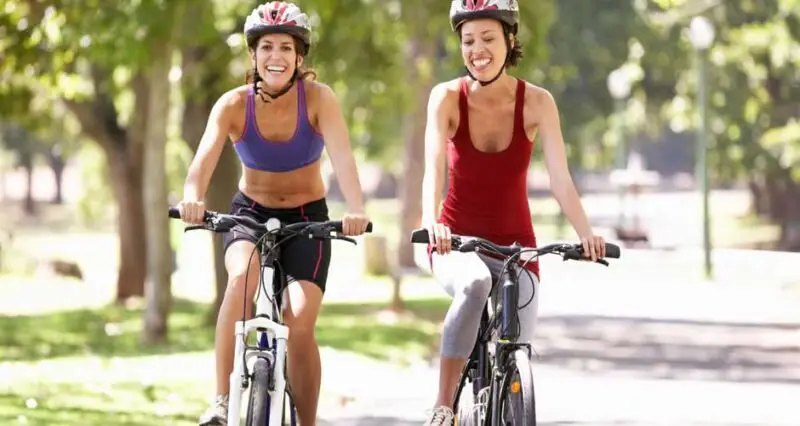
Cycling has surged in popularity as a green, healthy, and cost-effective mode of transportation. However, with this rise comes an increased risk of accidents. In the United States alone, over 800 cyclists were fatally injured in traffic last year, underscoring a critical need for enhanced road safety awareness. This blog post aims to arm cyclists with essential tips to navigate traffic safely, ensuring that the joy of riding is not overshadowed by potential dangers.
By sharing the road responsibly and staying visible, both cyclists and motorists can contribute to a safer environment for everyone. Let’s dive into how cyclists can take proactive steps to avoid accidents and enjoy a safe ride every time.
Understanding Your Role and Visibility
As cyclists, you are legally considered vehicle operators, entitled to the same rights and responsibilities as those driving cars.
This designation means navigating traffic with the understanding that you are part of the flow, not separate from it. Visibility is paramount in ensuring your safety. Many accidents occur because drivers simply do not see cyclists until it’s too late.
To enhance your visibility:
- Wear Bright Clothing:Opt for neon or fluorescent colors that are hard to miss, regardless of the time of day.
- Use Reflective Gear:Attach reflective materials to both your clothing and bike to catch the light from vehicle headlights, making you visible from a distance.
- Equip Proper Lighting:Always have a white light at the front and a red light at the back of your bike, especially when riding in low-light conditions or at night.
Remember, drivers often struggle to spot cyclists, particularly in blind spots or during dawn, dusk, and nighttime.
By taking steps to stand out, you significantly reduce the risk of being overlooked.
Pre-Ride Safety Checks and Equipment
Before setting out on any ride, a thorough safety check of your bicycle can prevent accidents and ensure a smooth journey. Here are key components to inspect:
- Brakes and Tires:Ensure your brakes respond quickly and firmly. Check that your tires are inflated to the recommended pressure and free from excessive wear or damage.
- Lights and Reflectors:Confirm that all lights are functioning correctly and that reflectors are securely attached and unobstructed.
- Helmet Fit:A helmet is your best defense against head injuries. Make sure it fits snugly, sits level on your head, and the chin strap is securely fastened.
In addition to these checks, consider wearing protective gear such as:
- Cycling Gloves:These can improve grip and protect your hands in the event of a fall.
- Padded Clothing:Especially important for longer rides, padded clothing can help absorb impact and provide extra comfort.
Regular maintenance and wearing appropriate safety gear are crucial for preventing injuries and ensuring that your bike is roadworthy. Taking a few minutes to perform these checks before each ride can make a significant difference in your safety.
Ride with Confidence and Predictability
Ride Defensively
Being proactive about your safety is essential. Always anticipate potential hazards—such as car doors opening or sudden stops in traffic—and have a plan for how to avoid them. Stay alert and be prepared to react swiftly to unforeseen dangers.
Follow Traffic Laws
Like motorists, you must adhere to traffic signals and signs. Riding in the same direction as traffic and using designated bike lanes whenever possible are practices that enhance your predictability and visibility.
Maintain Predictable Lines
Avoid weaving between lanes or making abrupt lane changes. These maneuvers can confuse and surprise drivers, increasing the risk of collisions. Instead, keep a straight, predictable path to ensure that drivers can anticipate your movements and give you the necessary space.
By adopting these habits, you reinforce your presence on the road and communicate your intentions clearly to motorists, which helps in preventing misunderstandings and accidents.
Sharing the Road with Motorists
- Claim Your Lane:On roads without designated bike lanes, don’t hesitate to “take the lane.” This means positioning yourself in the center of the lane when necessary, especially in narrow roadways where cars cannot safely pass you without changing lanes. This practice makes you more visible and discourages drivers from trying to squeeze past you dangerously close.
- Communicate with Hand Signals:Use clear and timely hand signals to indicate your turns and stops to drivers. This not only enhances your visibility but also informs drivers of your next move, allowing them adequate time to react appropriately.
- Be Aware of Dooring Zones:Always be cautious of the “dooring zone,” which is the space next to parked cars. Drivers or passengers may open their doors unexpectedly. Maintain a safe distance from parked vehicles to avoid collisions.
- Beware of Turning Vehicles:Pay extra attention at intersections and when passing driveways or alleys where vehicles may turn across your path. Drivers often fail to see cyclists, especially when making right-hand turns, so it’s crucial to anticipate their actions and be prepared to stop or yield if necessary.
Navigating traffic as a cyclist involves being constantly vigilant and communicative. By practicing these strategies, you enhance your safety and ensure a more harmonious coexistence with motor vehicles on the road.
Staying Alert and Avoiding Distractions
Avoid Riding Under the Influence
Cycling while impaired by alcohol or drugs significantly diminishes your balance, coordination, and judgment. These effects can lead to dangerous situations on the road. Always ensure you are sober and alert when you decide to ride.
Minimize Distractions
Resist the urge to use headphones or interact with electronic devices while riding. Keeping your ears and eyes free from distractions is crucial for maintaining full awareness of your surroundings.
Maintain Situational Awareness
Constant vigilance is key. Be aware of potential hazards like potholes, uneven road surfaces, or unexpected obstacles. Anticipate the actions of drivers, pedestrians, and other cyclists, and adjust your speed or position accordingly.
By staying focused and attentive, you significantly reduce your risk of accidents. This alertness allows you to react quickly to the dynamic conditions of the road and make safer decisions during your ride.
Key Strategies for Safer Cycling
Adopting a proactive approach to cycling safety is crucial for avoiding accidents and ensuring a pleasant riding experience. By enhancing your visibility, riding predictably, and sharing the road responsibly, you significantly reduce your risk of incidents and contribute to a safer environment for all road users.
Remember, whether you’re a seasoned cyclist or a beginner, prioritizing your safety and the safety of those around you is paramount. We encourage all cyclists to embrace these tips, enjoy their rides, and continue advocating for improved cycling conditions. Together, we can make the roads safer and more welcoming for everyone on two wheels.

